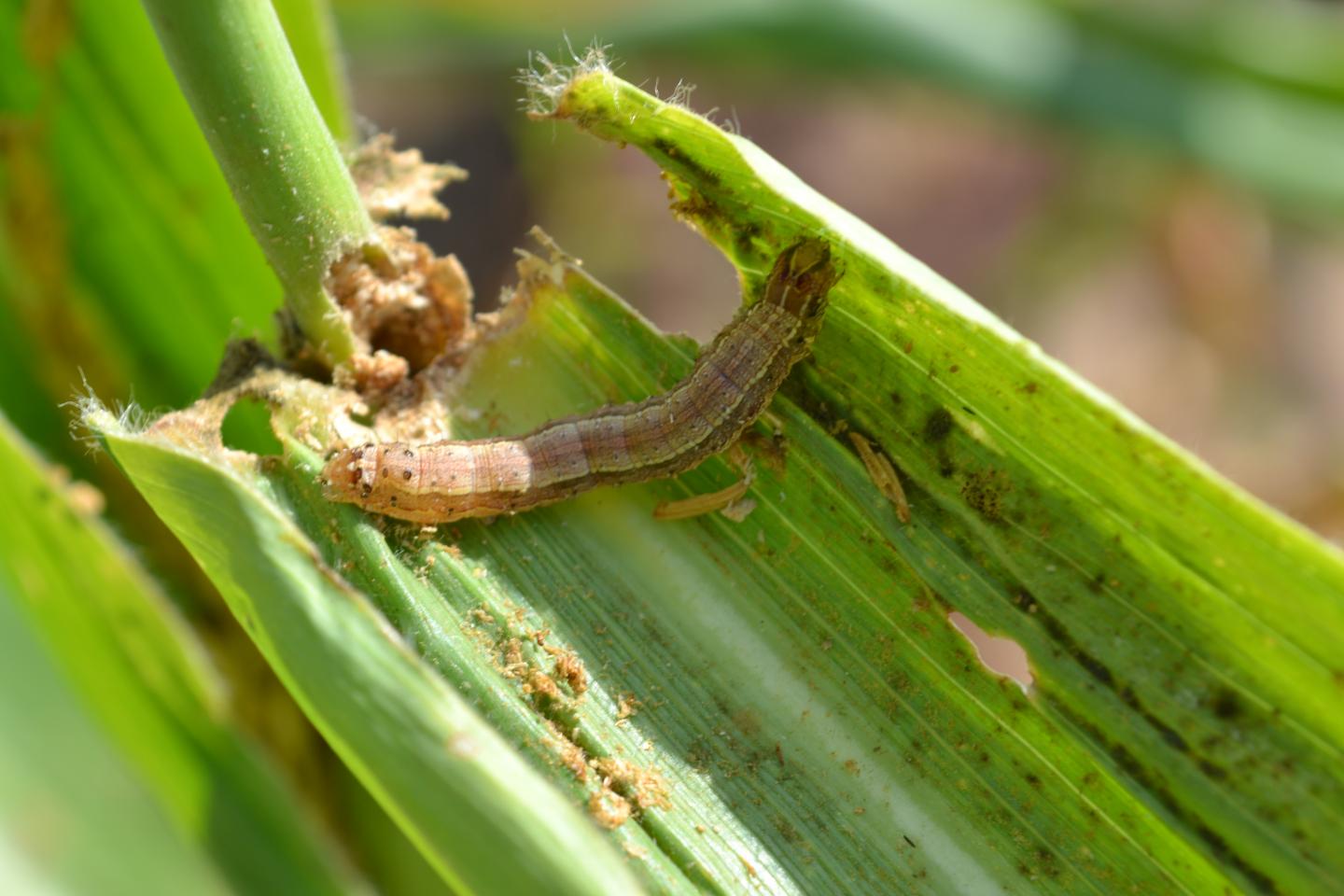Staple and economically important crops throughout the world could be at serious risk if efficient measures are not taken soon

Credit: Centre for Agriculture and Bioscience International (CABI)
Known to be feeding on many economically important crops cultured across the world, including maize, rice, sugarcane, sorghum, beet, tomato, potato, cotton and pasture grasses, the larvae of the native to the Americas fall armyworm moth seem to have already found a successful survival strategy in a diverse and changing world.
Furthermore, having taken no longer than 2 years to invade and spread throughout most of sub-Saharan Africa, the pest has already demonstrated its huge potential in severely affecting livelihoods around the globe.
A recent study in the open-access journal NeoBiota, conducted by Dr Regan Early of Exeter University, United Kingdom and her colleagues at the Centre for Agriculture and Bioscience International: Dr Pablo González-Moreno, Sean T. Murphy and Roger Day, looks into the factors and likelihood for the fall armyworm (Spodoptera frugiperda) to spread to other regions and continents.
Invasion progress
The alarming reports started in January 2016 when major outbreaks of fall armyworms were registered in Nigeria and Ghana, preceding signals from Benin, Sao Tomé and Togo shortly after. By September 2017, the pest had already been confirmed in 28 sub-Saharan African countries, with nine states expected to follow suit.
While unaided dispersal of the species in Africa is considered unlikely, it is speculated that the pest had arrived on a passenger flight from America. To back this theory, the researchers point out that the first countries to house the invader are also the major air transportation hubs in Africa and have warm, moist climate similar to those in the pest’s natural habitat.
In the aftermath, recent estimates point to up to 50% maize yield loss in Africa attributed to the fall armyworm. However, scientists believe that the species is far from finished spreading and is highly likely to invade new continents.
Who’s next?
To find what makes a region an inviting new habitat for the fall armyworm, hence which countries face the highest threat of future invasions, the researchers looked into both the native and African distributions of the species, and the effects different temperatures and precipitation levels have on it.
Having concluded that the lowest temperatures and the maximum amount of rain play the main role in determining whether the fall armyworm is to establish in a certain region, the scientists concluded that South and Southeast Asia, as well as Australia face the most serious risk, since their climate is very similar to the one preferred by the pest.
However, the authors of the study remind that this forecast shall in no way be taken with a sigh of relief by countries with milder climatic conditions. While the moth needs particular temperature and precipitation amplitudes at its year-round habitat, it could easily travel back and forth up to several hundred kilometres during its seasonal migrations. Therefore, if the fall armyworm establishes in North Africa, it could migrate to Europe during the warmer months, just like it has already been observed to travel from its year-round localities in Argentina, Texas and Florida all the way to Canada’s Québec and Ontario in the north.
The increasing transportation and international trade are also likely to facilitate the further spread of the fall armyworm outside Africa. The scientists conclude that, given the current travel air routes, it is Australia, China, India, Indonesia, Malaysia, Philippines and Thailand which are at high risk of becoming the pest’s new habitat.
What’s next?
Having concluded that there is a considerable potential for near global invasion and seasonal migration of fall armyworm, the scientists call for vigilance from farmers and programme managers alike. They remind that early detection of small larvae is crucial, since it is only at this stage that chemical insecticides would work effectively.
“As fall armyworm has huge potential to affect staple and economic crops globally, we urgently need information on the pest’s potential distribution and environmental limitations,” comment the researchers.
“Management decisions would be improved by further research on fall armyworm’s seasonal migration and population dynamics and the environmental dependency of interactions with other species.”
###
Original source:
Early R, González-Moreno P, Murphy ST, Day R (2018) Forecasting the global extent of
invasion of the cereal pest Spodoptera frugiperda, the fall armyworm. NeoBiota 40: 25-50. https:/
A preprint of the study was published earlier on bioRxiv.
Media Contact
Regan Early
[email protected]
Related Journal Article
http://dx.




